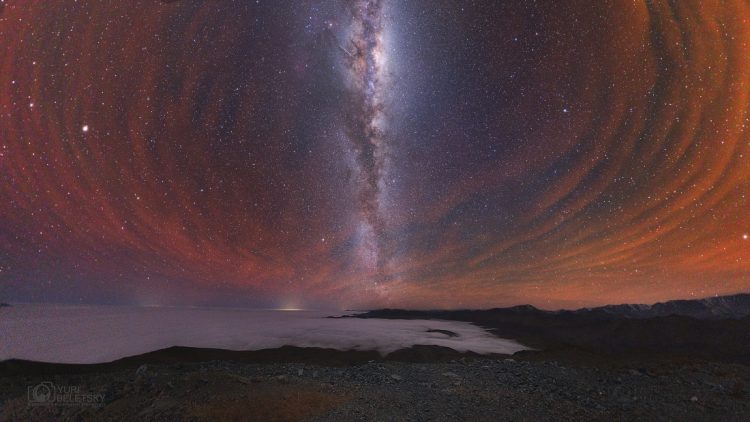Milky Way with Airglow Australis
Description
As seen on Astronomy Picture of the Day, after sunset on 2015 Sep 1, an exceptionally intense, reddish airglow flooded this Chilean winter nightscape. Above a sea of clouds and flanking the celestial Milky Way, the airglow seems to ripple and flow across the northern horizon in atmospheric waves. Originating at an altitude similar to aurorae, the luminous airglow is instead due to chemiluminescence, the production of light through chemical excitation. Commonly captured with a greenish tinge by sensitive digital cameras, this reddish airglow emission is from OH molecules and oxygen atoms at extremely low densities and has often been present in southern hemisphere nights during the last few years. On this night it was visible to the eye, but seen without color. Antares and the central Milky Way lie near the top, with bright star Arcturus at left. Straddling the Milky Way close to the horizon are Vega, Deneb, and Altair, known in northern nights as the stars of the Summer Triangle.

comments (0)